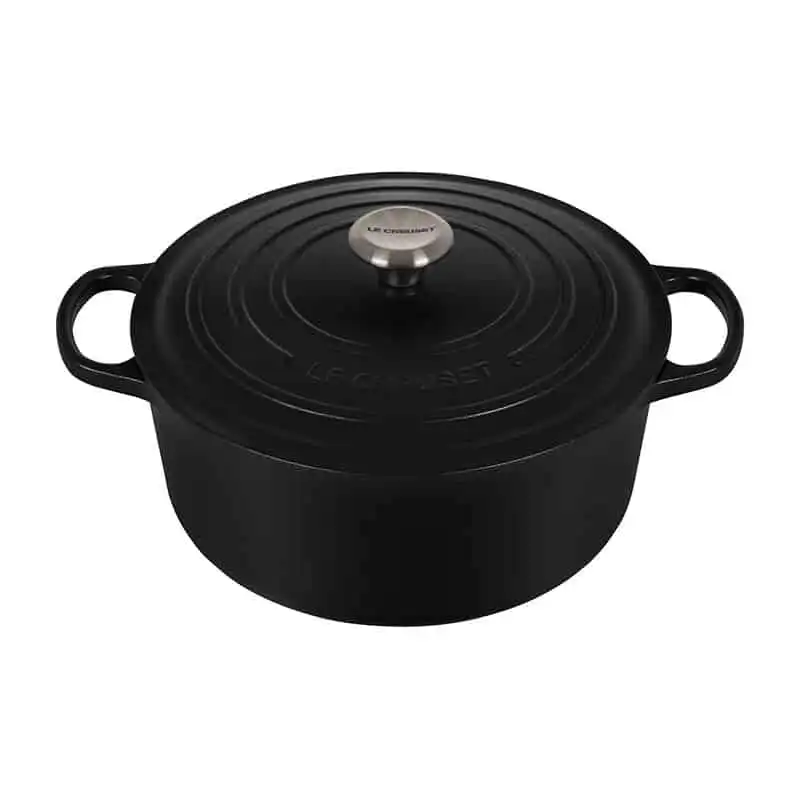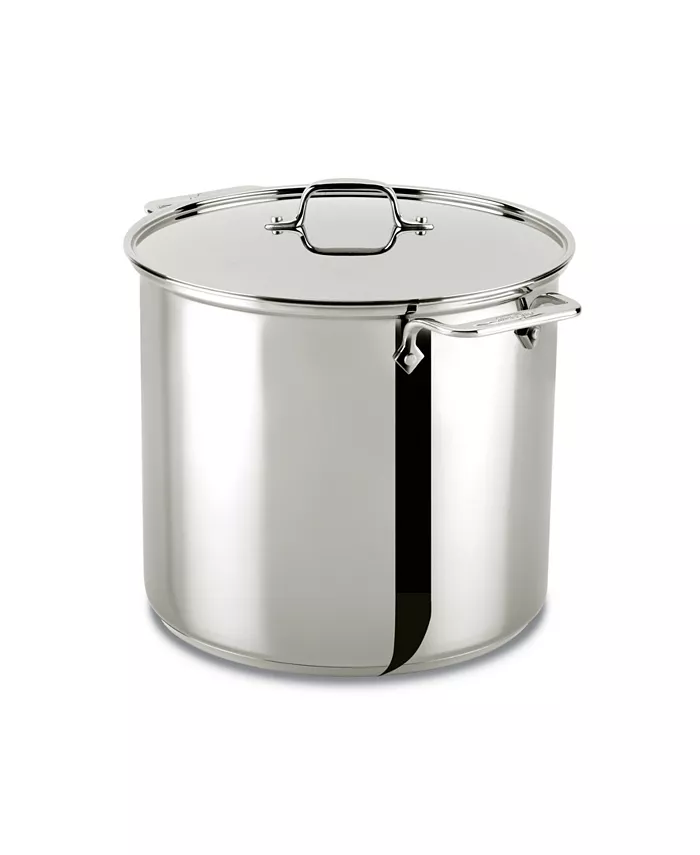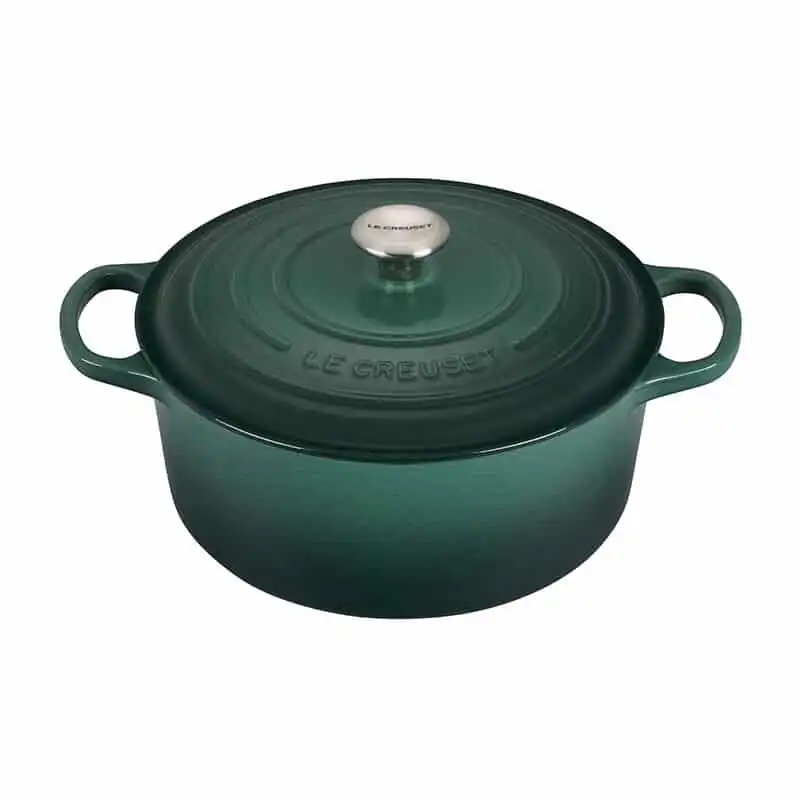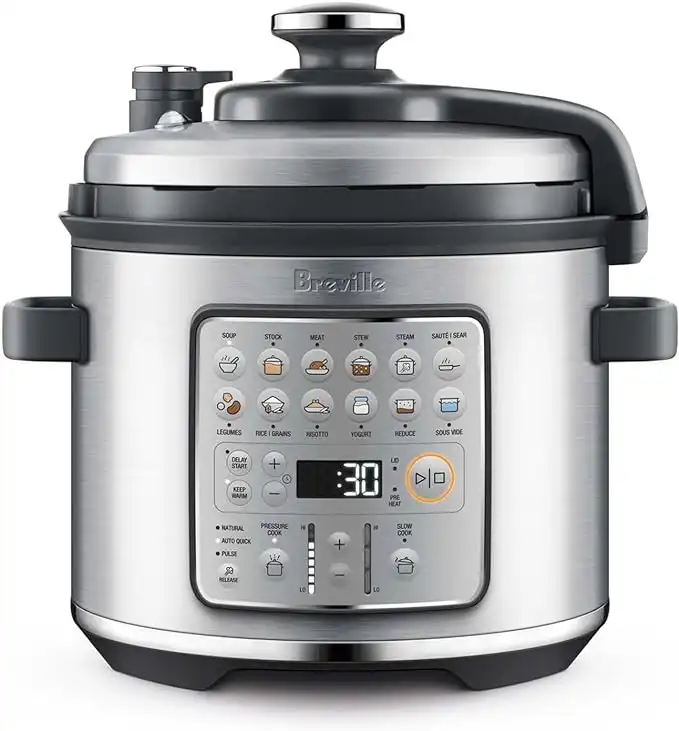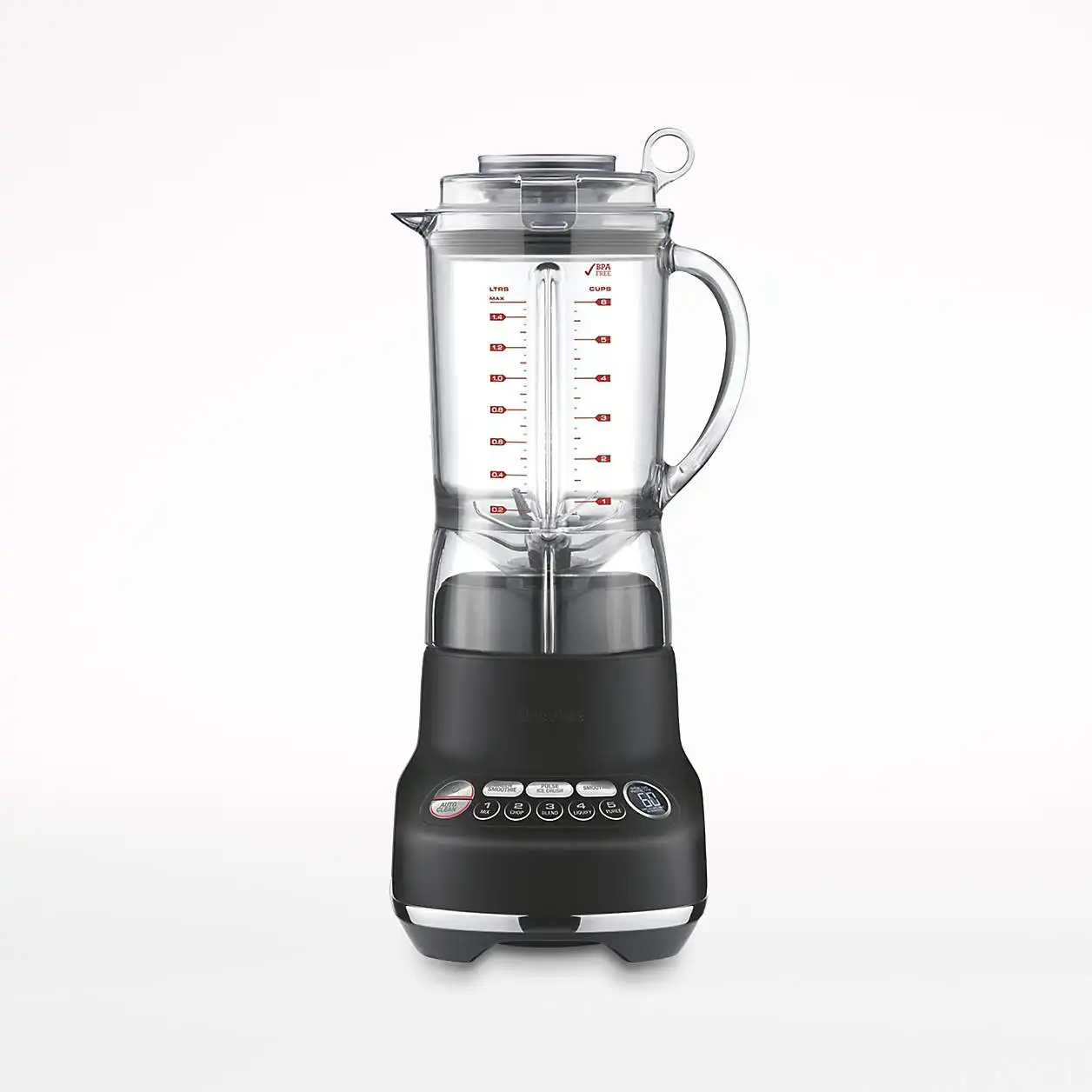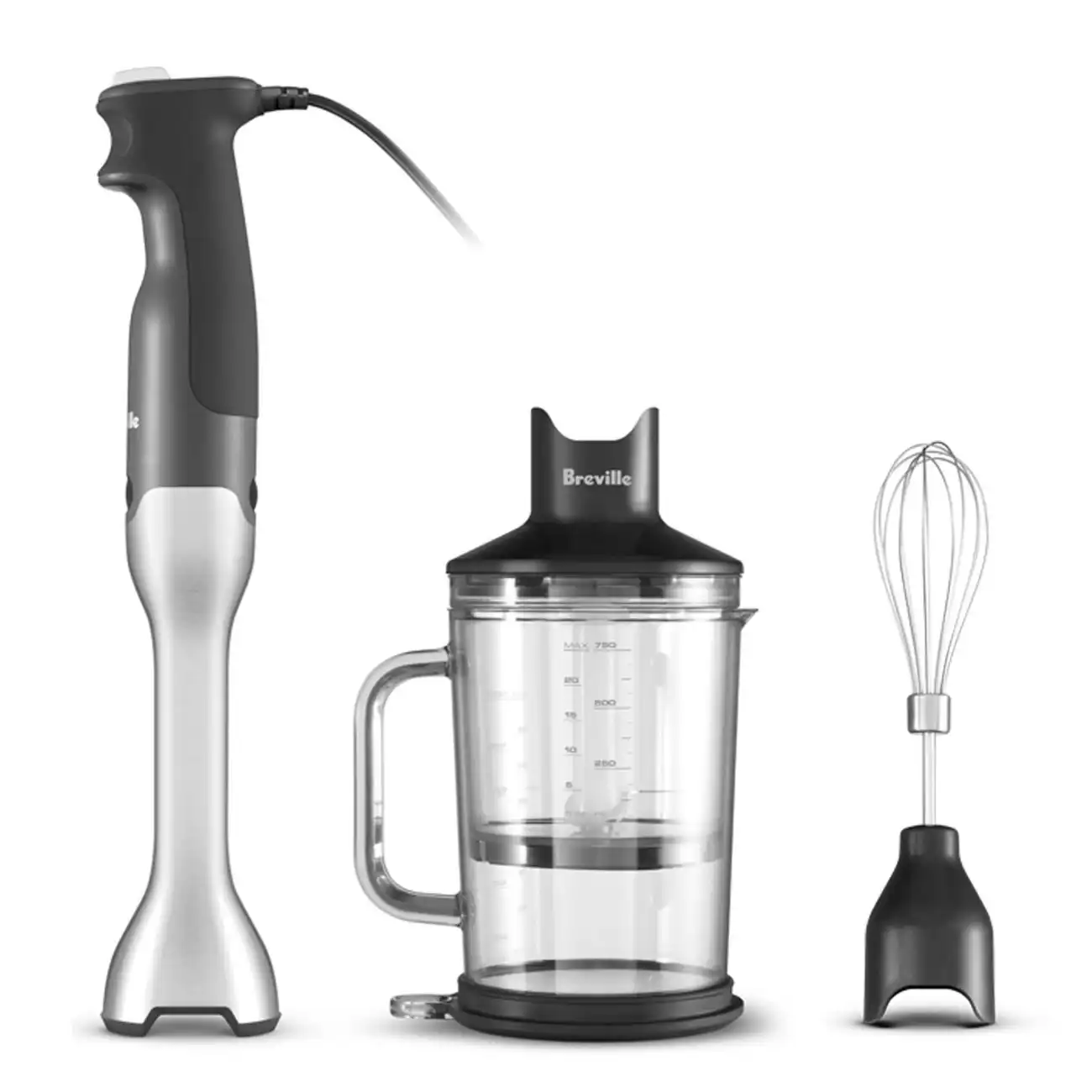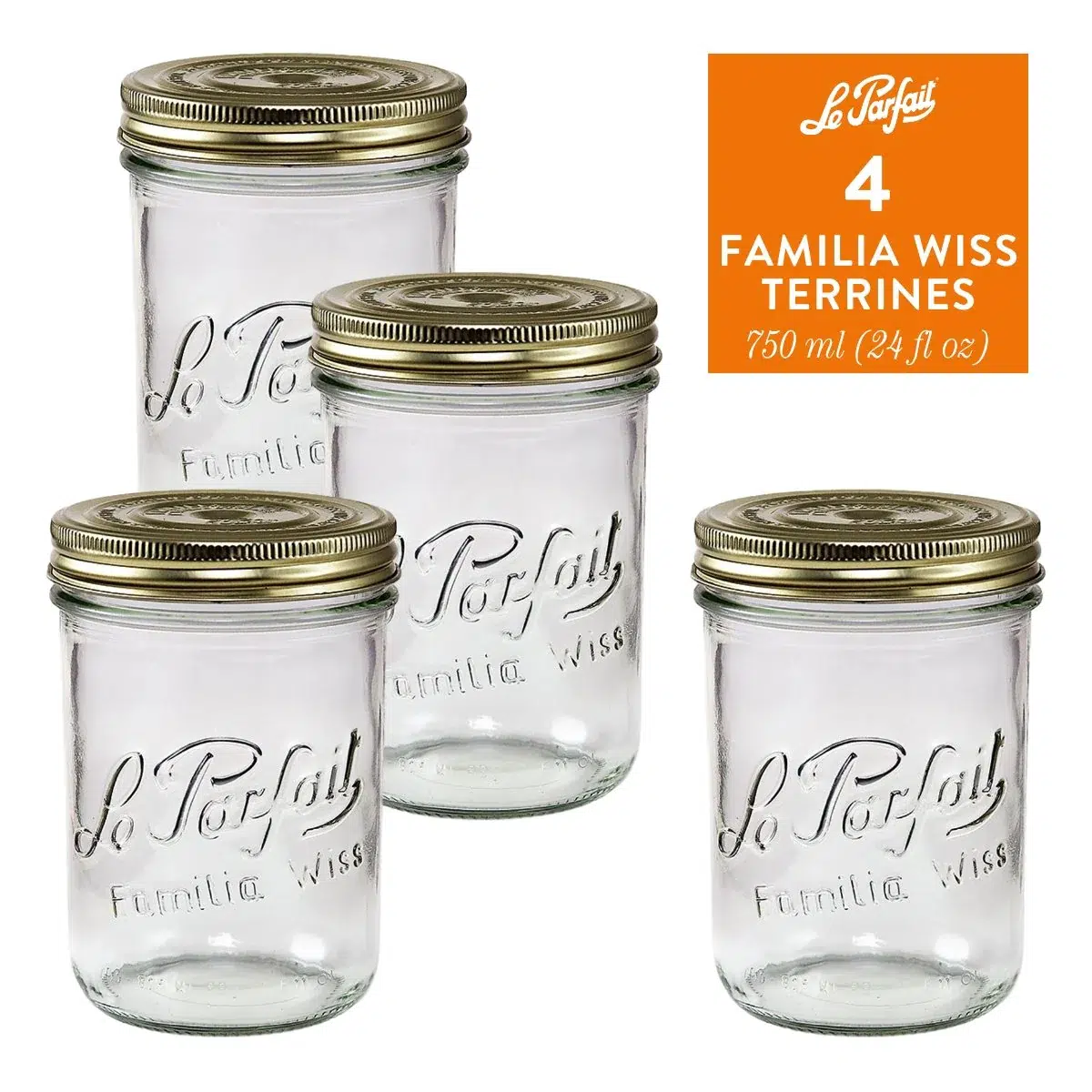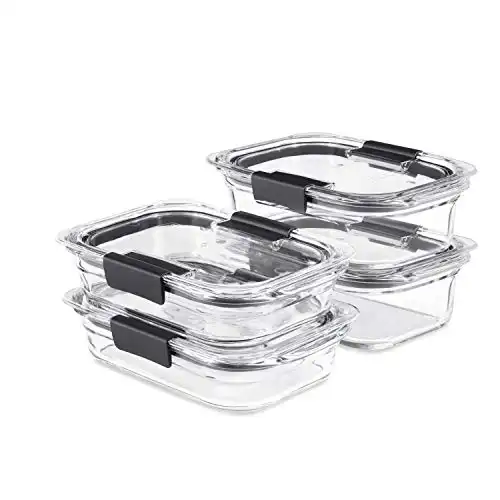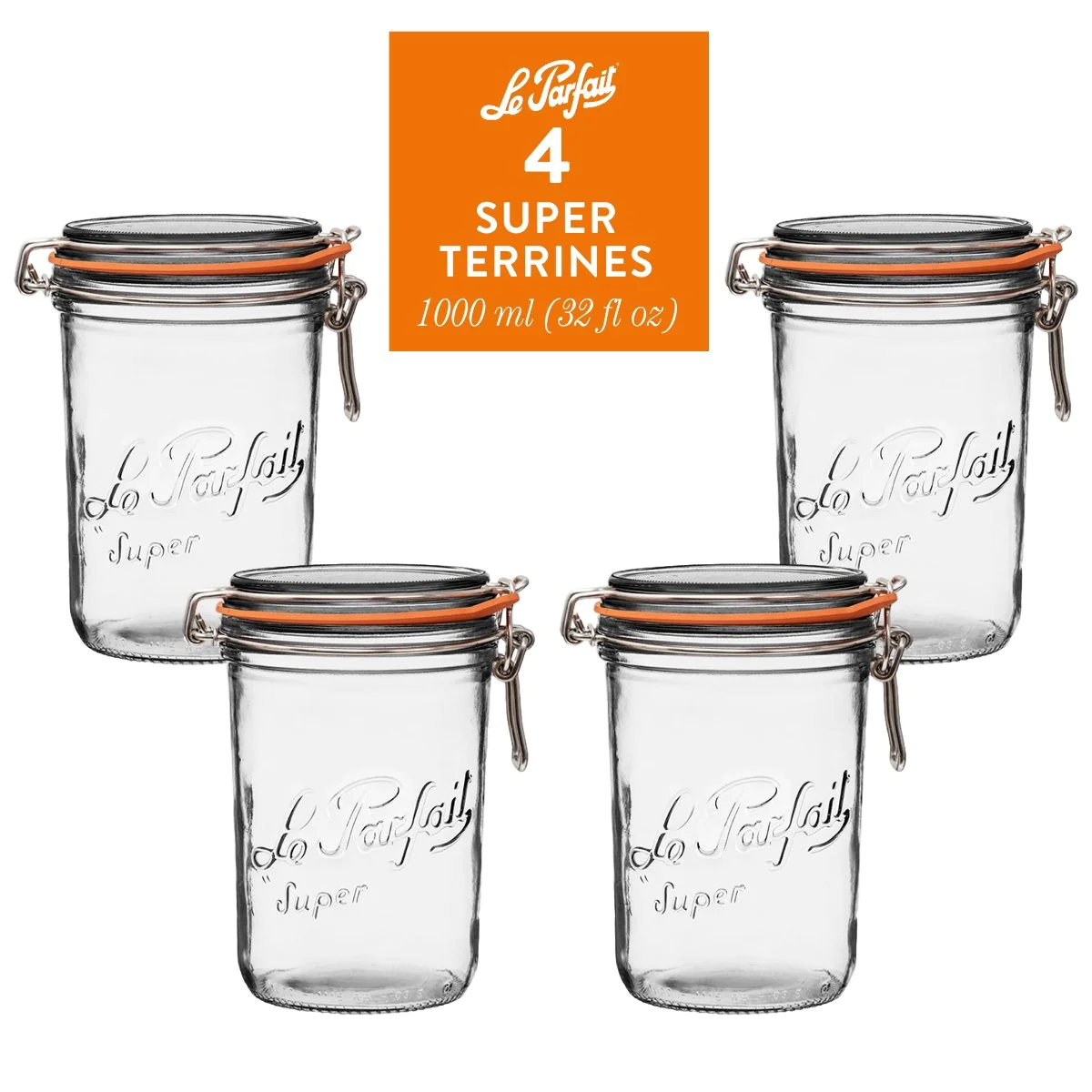Learn how to master the blend of fresh ingredients, seasonings, and kitchen essentials needed to whip up vibrant, tasty vegan soups that are sure to become your new comfort food favorites. Whether you’re a seasoned chef or a beginner, this guide promises to enhance your soup repertoire with ease and creativity.
This post contains affiliate links. All opinions are my own.
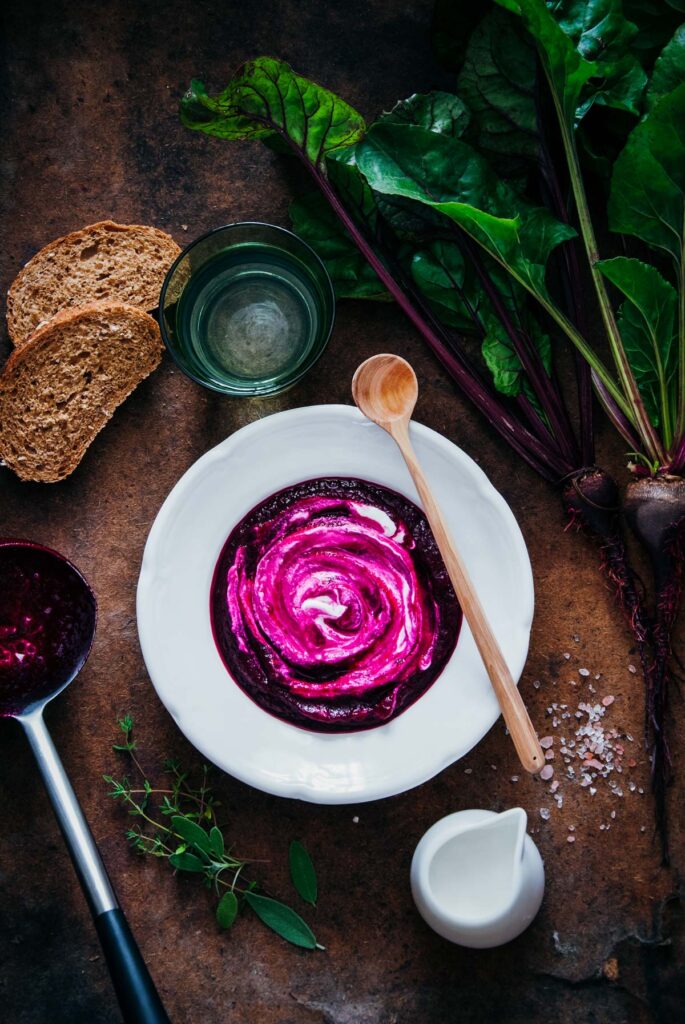
Best Kitchen Tools For Homemade Soup
The right kitchen tools are essential to craft the perfect vegan soup. From pots that distribute heat evenly to appliances that simplify the cooking process, these tools ensure your soup-making journey is enjoyable and successful.
Soup Pots
My two favorite soup pot types are Dutch ovens and a stainless steel stockpot.
- Dutch Oven: A Dutch oven retains heat well, making it ideal for slow-cooking soups and stews to develop deep flavors. However, Dutch ovens are only available in a certain size range. Even a large Dutch oven doesn’t compare in size to a classic stockpot. For day-to-day cooking, a Dutch is a great choice.
- Stockpot: A stainless steel stockpot is great for large-batch soup making. Your stainless steel stockpot is the best for meal-prepping or cooking for a large gathering!
Small Kitchen Appliances
Depending on the recipe, a few small appliances can make your plant-based soup adventures a bit more convenient.
- Slow Cooker: Perfect for busy cooks, a slow cooker allows soups to develop rich flavors over several hours without supervision.
- Instant Pot: An Instant Pot can drastically reduce cooking time for soups while maintaining depth of flavor.
- Immersion Blender: An immersion blender lets you puree soups directly in the pot, offering convenience and easy cleanup.
- Blender: A high-powered blender ensures smooth and creamy soups, such as broccoli cheddar soup, cauliflower soup, or vegan potato soup.
Kitchen Utensils
The right kitchen utensils can make your soup-making that much easier. Whether you are doing some meal prep or cooking dinner, here are the kitchen utensils I use the most.
- Lemon Squeezer: A lemon squeezer is handy for adding a fresh burst of acidity to brighten up your soups. It can be used to make lemon juice or lime juice.
- Potato Masher: A potato masher can be useful for thickening soups by directly mashing part of the ingredients in the pot.
- Knives: A sharp set of knives is essential for precisely chopping vegetables and herbs for your soup base.
- Cutting Board: A durable cutting board provides a safe and stable surface for your soup prep work.
- Microplane: A microplane is perfect for grating garlic, ginger, or citrus zest directly into the pot, infusing the soup with fresh flavors.
- Zester: Use a zester to add a hint of citrus zest, enhancing the soup’s aroma and depth.
- Spatula: A spatula is versatile for stirring soups and ensuring ingredients are evenly cooked.
- Wooden Spoon: A wooden spoon is gentle on pots and perfect for stirring soups, ensuring even cooking without scratching the surface of your cookware.
Go-To Vegan Soup Ingredients
Simple ingredients make the best vegan soups.
Oil
Oftentimes, you can make soups without oil. If you start with a little water and onions. The onions begin to sweat and create a beautiful cooking liquid. If you’d rather use oil, here are my top suggestions.
- Avocado Oil: With a high smoke point and mild taste, avocado oil is ideal for frying ingredients or adding a hint of richness to soups.
- Coconut Oil: Coconut oil adds a slight tropical flavor and creamy texture, perfect for adding depth to vegan soups and stews.
- Olive Oil: I don’t recommend cooking on high heat with olive oil due to its lower smoke point. However, some creamy soup recipes suggest drizzling a little olive oil on top when you serve it.
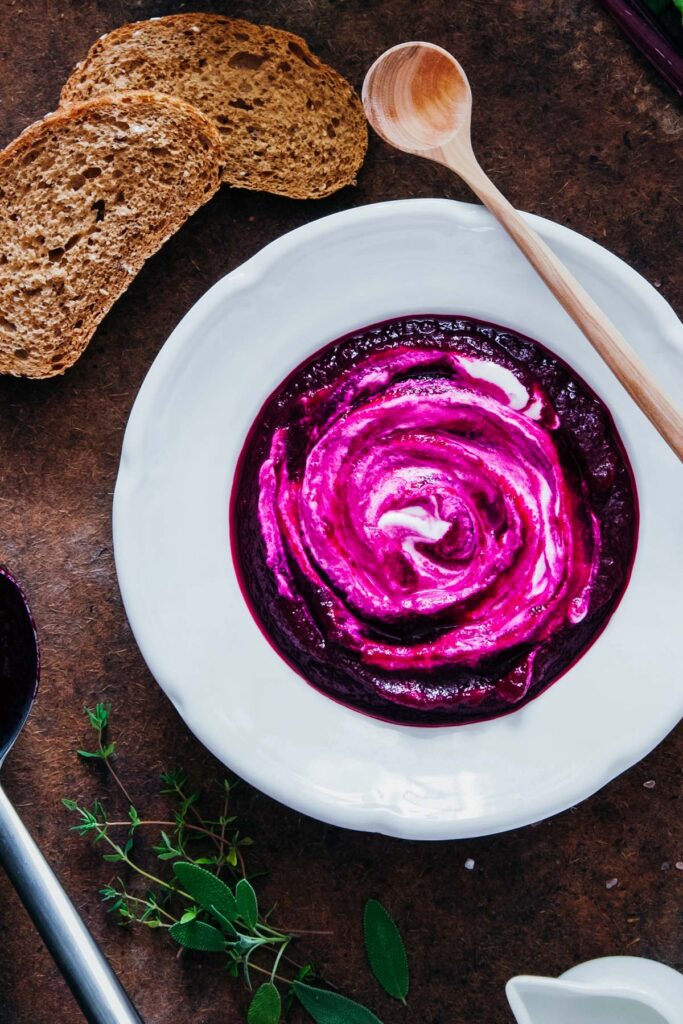
Vegetable Broth
The base of your vegan soup is so important. If you don’t have veggie broth, bouillon, or stock on hand, check out this handy guide for Best Vegetable Bouillon Substitutes.
- Vegetable Broth: A foundational element for vegan soups, vegetable broth provides a light and aromatic base, rich in flavors from simmered vegetables and herbs.
- Vegetable Bouillon: Concentrated vegetable bouillon, available in cubes or paste, offers a convenient way to infuse soups with deep vegetable flavors and can be diluted to the desired strength.
- Vegetable Stock: Vegetable stock, similar to broth but typically simmered longer with more emphasis on extracting flavors from the vegetables, provides a robust and hearty foundation for soups, adding depth and richness.
- Miso Paste: Miso paste infuses soups with a rich, savory umami flavor, adding depth and complexity with its fermented, slightly salty taste. It’s perfect for enhancing the base of vegan broths.
Legumes, Mushrooms And More!
Plant-based protein is a great addition to any soup recipe. (Keep in mind most plant foods contain protein naturally. These are just plants that have a significant amount of protein.) There are so many types of beans, mushrooms, and tofu that you can use. Here are my favorites.
- Great Northern Beans: Mild and creamy. Great Northern beans blend well into soups, absorbing flavors while adding body.
- Cannellini Beans: These white beans are soft and creamy, perfect for thickening soups and adding a rich texture.
- Black Beans: Black beans contribute a robust flavor and striking color, ideal for soups and stews with a Latin flair.
- Kidney Beans: With their firm texture and slightly sweet taste, kidney beans are great in chunky soups and add visual appeal.
- Pinto Beans: Pinto beans offer a creamy texture and a nutty flavor, making them a versatile choice for a variety of soups.
- Chickpeas: Nutty and firm chickpeas add substance and protein to soups, holding their shape well during cooking.
- Navy Beans: Small and delicate, navy beans are perfect for pureed soups or as a tender addition to minestrone.
- Red Lentils: Red lentils cook quickly and disintegrate into a creamy consistency, thickening soups without the need for blending.
- Brown Lentils: Holding their shape well, brown lentils add a meaty texture and are ideal for more rustic, hearty soups.
- Green Lentils: These green lentils have a slightly peppery flavor and remain firm after cooking, perfect for adding a bite to soups.
- Black Lentils: Also known as Beluga lentils, these retain their shape and offer a rich, earthy flavor, enhancing any soup’s complexity.
- Golden Lentils: Golden lentils, also known as yellow lentils, are a fantastic ingredient to spotlight in a vegan
- Tofu: Tofu is a versatile protein that absorbs the flavors of the soup. Silken tofu blends smoothly into creamy soups, while extra firm tofu will keep its shape.
- Mushrooms: Mushrooms add a meaty texture and umami depth to vegan soups. Varieties like shiitake, portobello, and cremini offer distinct flavors and richness.
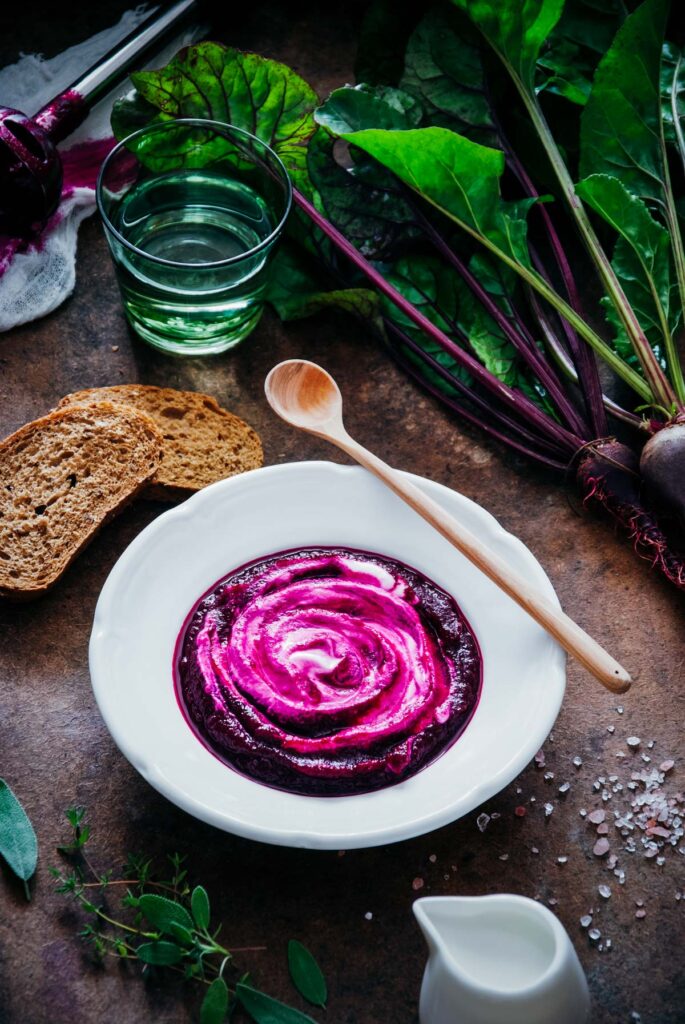
Starches And Grains
Grains can transform vegan soups’ texture and nutritional profile, adding heartiness and flavor.
- Wild Rice: Wild rice boasts a chewy texture and nutty flavor, adding a rustic touch and visual appeal to soups.
- Brown Rice: Brown rice offers a wholesome, nutty flavor and retains its texture well in soups, contributing to its heartiness.
- White Rice: White rice thickens soups slightly with its soft texture and mild flavor while blending seamlessly into the background.
- Black Rice: Also known as forbidden rice, black rice adds dramatic color and a slightly sweet, earthy flavor to soups.
- Basmati Rice: Basmati rice introduces a fragrant aroma and a light, fluffy texture, perfect for adding a delicate touch to brothy soups.
- Jasmine Rice: Jasmine rice imparts a subtle floral aroma and a soft, sticky texture, enhancing the overall sensory experience of the soup.
- Russet Potato: Russet potatoes are starchy and ideal for thickening soups. When cooked, they break down easily, creating a creamy texture without the need for dairy.
- Yukon Gold Potato: With their buttery flavor and medium starch content, Yukon Gold potatoes add richness and hold their shape well, making them perfect for chunky soups.
- Red Potato: Red potatoes have a waxy texture and a skin that holds up well during cooking, adding a pop of color and maintaining their shape for a more textured soup.
- Sweet Potato: Sweet potatoes introduce a sweet, earthy flavor and a vibrant color. They’re rich in vitamins and add a creamy texture when blended, perfect for adding depth and nutrition to plant-based soups.
- Quinoa: Quinoa adds a delightful crunch and nutty flavor to soups and a boost of complete protein, making it a nutritious addition to any vegan recipe.
- Barley: Barley contributes a chewy texture and a hearty, grainy taste. It thickens soups nicely, offering a satisfying fullness and a rich source of fiber.
- Bulgur: Bulgur cooks quickly, adding a light, nutty flavor to soups. Its tender texture makes it a great thickener or a subtle grainy addition without overpowering other ingredients.
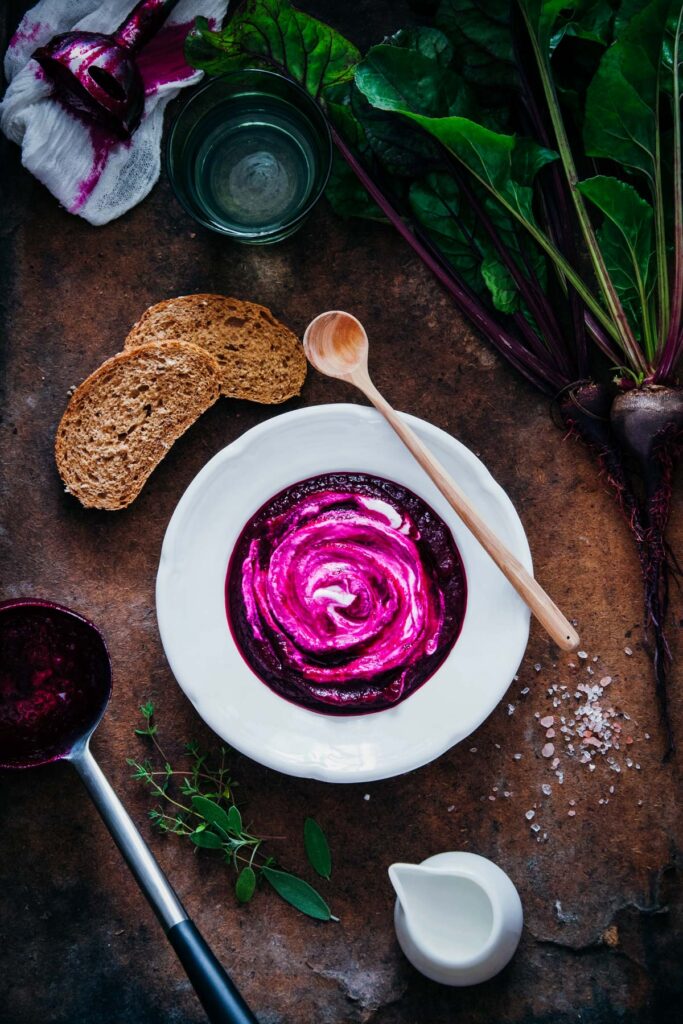
Canned Ingredients
Here are my most often-used canned soup ingredients. When it comes to beans, using dried or canned works well. Canned beans are your best bet if you are in a time crunch. Whereas, dried beans can be ideal if you are cooking in a slow or pressure cooker.
- Tomato Paste: Concentrated tomato paste adds depth and a rich umami base to vegan soups, intensifying the overall flavor with just a small amount.
- Canned Tomatoes: Canned tomatoes provide convenience and consistency in flavor, offering a juicy, acidic brightness that can enhance the body and taste of soups. Depending on the recipe, you can use tomato sauce, crushed tomatoes, or diced tomatoes.
- Coconut Milk: Coconut milk lends a creamy texture and a hint of sweetness, perfect for creating rich, velvety soups and curries.
- Coconut Cream: Thicker and richer than coconut milk, coconut cream adds a luxurious creaminess and subtle sweetness to vegan soups, perfect for achieving a velvety texture and enhancing flavor profiles.
- Beans: Canned beans are a pantry staple for quick and easy protein additions to soups, available in various types to suit any recipe. They are ready to use without the soaking time required for dried beans.
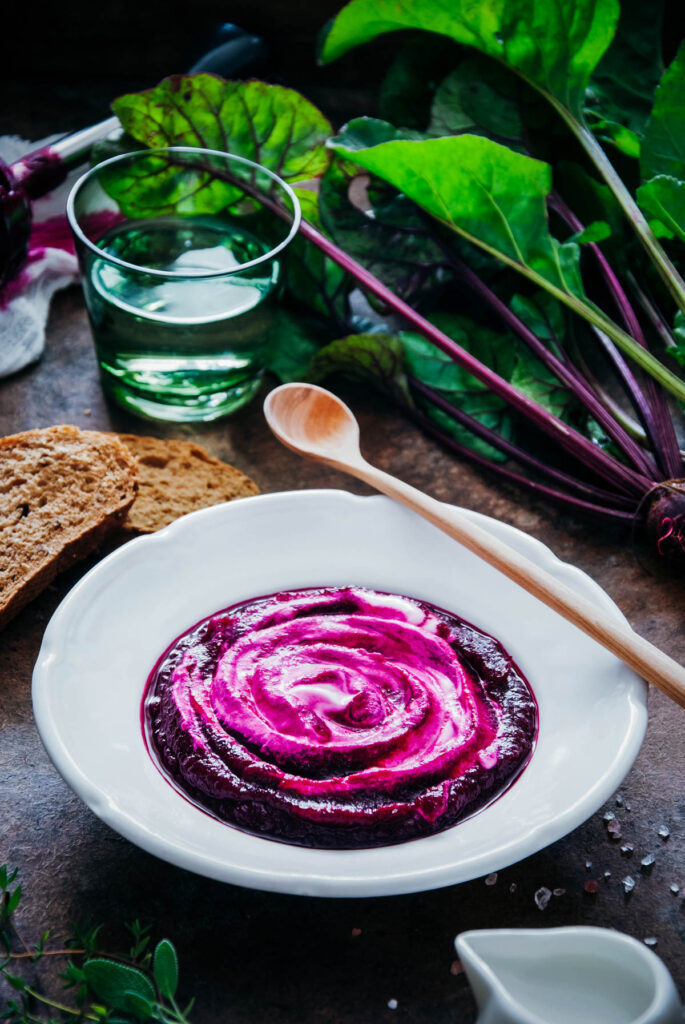
Herbs & Spices
Harnessing the power of fresh and dried herbs can transform your vegan soups from simple to sublime, infusing them with layers of aromatic flavors and vibrant colors.
- Basil: Sweet and slightly peppery, basil contributes a warm, aromatic essence, perfect for finishing soups or adding to tomato-based recipes.
- Bay Leaf: A bay leaf imparts a unique floral and slightly sweet essence, lending depth to soups with its lingering, aromatic flavor that’s best when simmered slowly.
- Black Pepper: Freshly ground black pepper adds a subtle heat and piquancy, enhancing the natural flavors of the soup without overwhelming them.
- Cayenne: A pinch of cayenne pepper powder adds fiery heat to soups, instantly elevating the dish with its potent spice, allowing for easy adjustment to suit any palate.
- Chili Powder: Chili powder contributes a smoky depth and mild to moderate heat, incorporating flavors of various dried chilis, garlic, and cumin, perfect for giving soups a warm, complex undertone.
- Cilantro: With its bright, citrusy notes, cilantro brings a fresh, vibrant kick to soups, ideal for adding just before serving to maintain its delicate flavor.
- Chives: Chives bring a delicate oniony flavor and a vibrant green touch to soups, perfect for garnishing and adding a subtle, fresh layer of taste right before serving.
- Coriander: The seed of the cilantro plant, this spice is flavorful! Ground coriander tastes very different from cilantro leaves and has a warm, nutty spice flavor.
- Cumin: Cumin adds a warm, earthy flavor with hints of citrus to soups, enriching them with its distinct aroma and slightly nutty, spicy taste, ideal for lending depth to a variety of vegan recipes. Use ground cumin or cumin seeds!
- Curry Powder: Curry powder brings a warm, complex blend of spices to soups, including turmeric, cumin, and coriander, adding depth and a hint of exotic flavor.
- Dill: Dill adds a unique, tangy brightness to soups, its feathery fronds offering a delicate texture and a burst of fresh flavor. If a dish calls for dill, but you don’t have any one hand, check out this handy guide of Substitutes For Dill.
- Garlic: Fresh garlic adds a pungent, aromatic intensity to soups, infusing them with a rich depth of flavor that mellows and sweetens upon cooking. Garlic powder provides a convenient, milder alternative to fresh garlic, offering a consistent, evenly distributed garlic flavor throughout the soup without the need for peeling and mincing.
- Ginger: Fresh or powdered ginger adds a spicy, zesty kick to soups, lending a refreshing brightness and aiding digestion.
- Green Onions: Green onions add a mild, crisp bite and a pop of color, perfect for garnishing and adding a fresh layer of flavor to vegan soups.
- Italian Parsley: Italian parsley offers a clean, slightly peppery taste, enriching soups with a subtle herbaceousness and enhancing the overall freshness. If your recipe calls for parsley but you don’t have any on hand, use this Parsley Substitute Guide.
- Italian Seasoning: A blend of dried herbs like oregano, thyme, and basil, Italian seasoning brings a classic Mediterranean aroma and taste to soups, evoking the essence of Italian cuisine.
- Marjoram: Marjoram’s sweet, citrusy flavor complements a wide range of soups, adding a subtle, herbal warmth that’s particularly good in lighter broths.
- Mint: Mint provides a cool, refreshing lift to soups, a surprising twist that can brighten flavors and add an element of freshness.
- Mustard: Mustard, whether in powder form or as prepared mustard, introduces a tangy depth and slight heat to soups, enhancing other flavors and adding complexity to the broth. If your recipe calls for mustard but don’t have any on hand, check out this handy Mustard Substitutions Guide.
- Nutritional Yeast: Nutritional yeast offers a cheese-like umami flavor, enriching vegan soups with a savory depth and a boost of B vitamins.
- Onion Powder: Onion powder offers a convenient way to add a concentrated burst of savory flavor to soups, delivering the essence of onion without the texture.
- Oregano: Oregano contributes a bold, earthy flavor with a hint of bitterness, enhancing soups with its robust taste reminiscent of Mediterranean cuisines.
- Paprika: Paprika varies from sweet to smoky, infusing soups with vibrant color and a nuanced flavor that can elevate the dish’s complexity.
- Red Pepper Flakes: Red pepper flakes introduce a spicy kick that can be adjusted to taste, adding heat and complexity to the soup’s flavor profile.
- Rosemary: Rosemary’s piney aroma and earthy flavor infuse soups with a Mediterranean warmth, best added during cooking to mellow its potency. You can use fresh rosemary or dried rosemary.
- Thyme: Thyme lends a subtle, earthy sweetness to soups, with its leaves easily stripped from stems and scattered in for a gentle layer of flavor.
- Sage: Sage has a slightly peppery flavor and brings a warm, aromatic depth to soups, particularly in creamy or squash-based varieties.
- Turmeric: Turmeric adds a bright yellow hue and a warm, bitter flavor to soups, along with anti-inflammatory benefits, making it both healthful and flavorful.

Salt
An essential ingredient in any kitchen, salt is crucial for enhancing and balancing the flavors in soup recipes. It draws out the natural tastes of vegetables and legumes, turning a simple soup into a richly flavored dish.
- Sea Salt: Sea salt enhances ingredients’ natural flavors in vegan soups with its clean, straightforward saltiness and trace minerals, adding depth with a more nuanced flavor than table salt.
- Pink Salt: Pink Himalayan salt not only adds a delicate saltiness to soups but also provides an array of minerals. Its distinct color and subtle flavor profile can elevate the taste of your dish.
- Kosher Salt: Kosher salt dissolves easily and offers a more controlled way to season soups, ensuring an even flavor distribution without overpowering the dish.
Storage Containers
Storing leftovers in glass helps keep it fresh longer. If you are freezing it, glass or silicone can work well.
- Glass Tupperware: Glass Tupperware is ideal for storing vegan soups, as it doesn’t absorb odors or colors and can be safely used in both the freezer and microwave.
- Glass Jars: Ideal for storing and reheating leftovers, glass jars keep soup fresh without absorbing flavors.
- Silicone Bags: Reusable silicone bags are a space-saving and eco-friendly option for freezing portions of soup.
Favorite Vegan Soup Recipes
Here are the 75 Best Vegan Soup Recipes: Your Ultimate Guide.
FAQ
Vegans can enjoy a wide variety of soups made with vegetable broths, legumes, grains, and seasonal vegetables.
Incorporate a mix of fresh herbs, spices, and umami-rich ingredients like nutritional yeast or soy sauce to enhance flavor.
Adding mushrooms, smoked paprika, or liquid smoke can impart a meaty flavor to vegan soups without using animal products.
Vegans can consume any broth made from vegetables, mushrooms, or legumes, avoiding broths derived from meat or dairy products.
Final Words
Creating delicious vegan soups is about combining the right balance of fresh ingredients, spices, and creativity. With the right tools and a bit of know-how, you can whip up comforting and nutritious soups that delight the senses and nourish the body.
This post may contain affiliate links, meaning I’ll receive a commission if you purchase through those links at no extra cost to you. Please read our full disclosure for more information. Thank you for supporting Raepublic.

